Cast iron contains much more carbon and silicon than steel, and this composition makes it less ductile and more metallurgically deformed when welded. That’s why many welders look for an alternative when welding cast iron.
Brazing cast iron has proven successful in cast iron repair, maintenance, and casting reclamation applications.
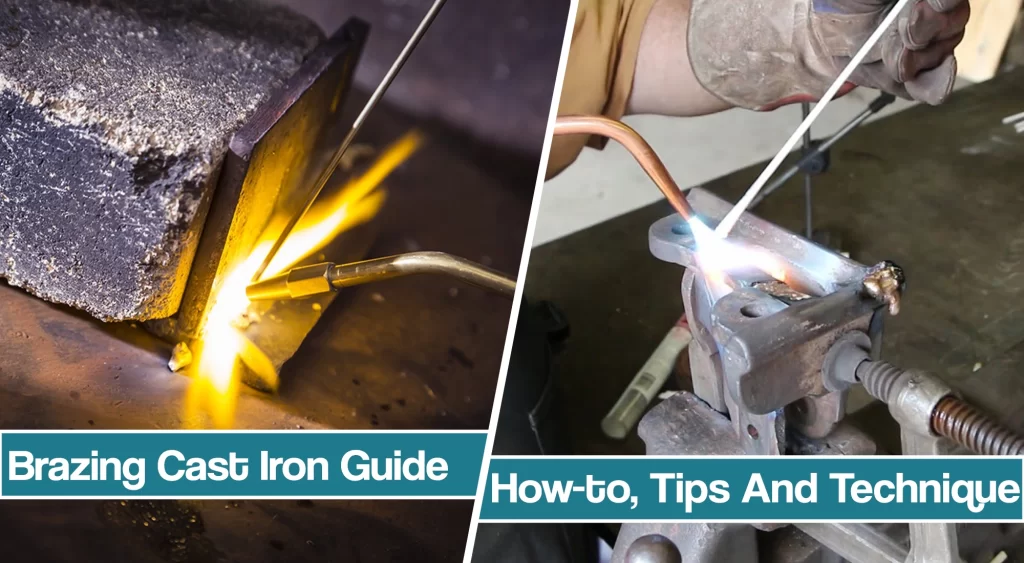
Due to significantly lower temperatures compared to welding, brittleness and the likelihood of cracking of the welded material are reduced considerably.
Nonetheless, braze welding is suitable for grey, austenitic, and malleable cast irons, so read more to learn how.
properties of Cast iron
Before we discuss how to weld cast iron using the brazing technique, we will first talk about the properties that make cast iron challenging to weld.
Cast iron consists of iron and carbon in different proportions, most commonly 2–4% carbon, with additional elements such as manganese, silicon, chromium, nickel, copper, and molybdenum, which enhance specific properties.
- Hardness: Cast iron is hard, and it can be hardened by heating and sudden cooling, making it durable. Brinell hardness number 150 to 220 (no alloys) and 300 to 600 (alloyed).
- Toughness. Cast iron can quickly absorb energy.
- Ductility. Ability to deform without fracture.
- Elasticity. Material’s ability to return to its original dimensions after deformation.
- Malleability: Cast iron can deform under compression without rupturing.
- Tensile strength: 25,000 to 50,000 psi (172,375 to 344,750 kPa) (no alloys) and 50,000 to 100,000 psi (344,750 to 689,500 kPa) (alloyed).
- Fatigue strength. The highest stress that a material can withstand for a given number of cycles without breaking.
- Melting Point. Cast iron has a lower melting point (12000C) compared to mild steel, with 13000C and 14000C.
- Castability. Cast iron is easier to work with when casting shapes out of the material.
- Machinability. Cast iron is almost elastic up to ultimate tensile strength and produces discontinuous chips that easily break away from the sample.
- More on mechanical metal properties of cast iron and other metals can be found here.
Due to the composition and note characteristics, the welding process causes this carbon to migrate into the weld metal and/or the heat-affected zone. As a result, high carbon composition leads to high brittleness/hardness, eventually resulting in post-weld cracking.
Types of Cast Iron
The four basic types of cast iron – are white cast iron, grey cast iron, ductile cast iron, and malleable cast iron. Even though we will briefly explain each type, you should know joining cast iron by brazing is most suitable for grey, austenitic, and malleable cast irons.
| Types Of Cast Iron | Carbon | Silicon | Manganese | Sulphur | Phosphorus |
|---|---|---|---|---|---|
| Gray Cast Iron | 2.5-4% | 1-3% | 0.2-1% | 0.02-0.25% | 0.02-1% |
| Ductile Cast Iron | 3-4% | 1.8-2.8% | 0.1-1% | 0.01-0.03% | 0.01-0.1% |
| Compacted Grafite | 2.5-4% | 1-3% | 0.2-1% | 0.01-0.03% | 0.01-0.1% |
| Malleable Cast Iron | 2-2.9% | 0.9-1.9% | 0.15-1.2% | 0.02-0.2% | 0.02-0.2% |
| White Cast Iron | 1.8-3.6% | 0.5-1.9% | 0.25-0.8% | 0.06-0.2% | 0.06-0.2% |
- The most common type, gray cast iron, has a graphite microstructure made up of many small fractures. It is called “grey iron” because these small cracks that result from molten pig iron that is permitted to cool slowly give the metal gray color. Gray cast iron offers a similar compressive strength as steel. As a result, it has become a popular metal choice for applications where compressive strength is important.
- White cast iron is not as common as gray iron, but it is often used. This type got the name from its off-white color, resulting from iron compounds known as cementite. White cast iron is hard and offers excellent abrasion resistance.
- Ductile cast iron is often referred to as nodular cast iron, and it is a soft, ductile, high-carbon iron alloy. It is typically made with traces of other compounds, including magnesium and cerium.
- Malleable cast iron is easy to work with. It is typically made by heat treatment processes on white cast iron. The white cast iron is heated for up to two days and then cooled. Once completed, malleable iron can be bent and manipulated to achieve unique shapes and sizes.
Brazing Cast Iron
Brazing is a joining method that uses the capillary action effect. As a result, the molten filler metal flows in narrow gaps without the help of external forces, even against gravity. To braze cast iron, you need a very tight fit-up, with gaps between 0.002″ (0.05 mm) and 0.006″ (0.15 mm), cleanliness, and flux.
One of the most significant advantages of brazing cast iron is the limited heating. Brazing uses filler metal that melts above 840 °F (450 °C), but the base metal remains unaffected.
Therefore, you cannot reach the melting temperature of the cast iron by using extreme heat. That way, you don’t affect the properties of the parent metal and reduce the risks of cracking.
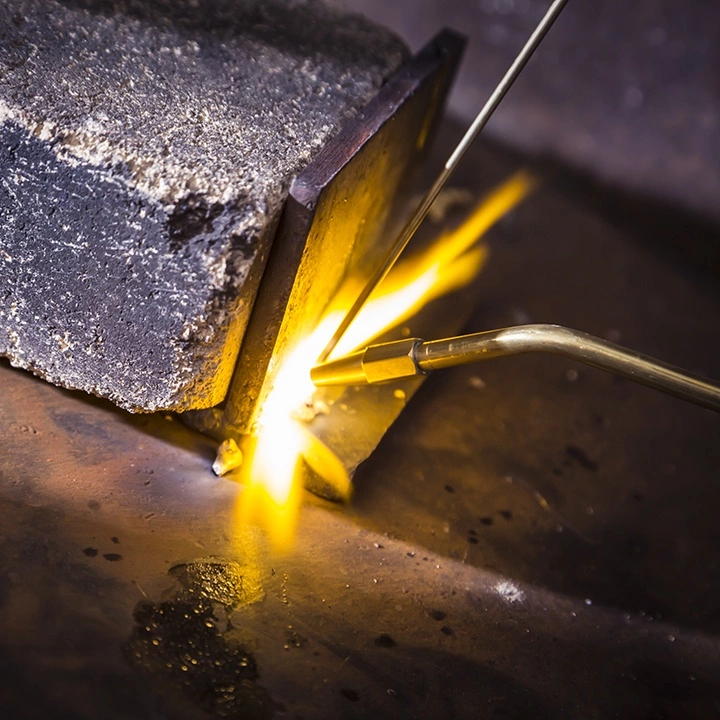
Brazing fills the gap of a large lap joint, and there is no external butt or fillet weld. However, due to lower heat, it is suitable for small tubing, pipes, thin metal, and cast iron exhaust manifold.
Any brazing processes suitable for steel are applicable to cast irons. Pre- and Post- braze operations should be similar to that of a standard brazing process. Consumables ideal for brazing carbon steel can be used for cast irons.
Weld Area Preparation
Before brazing cast iron, it’s essential to clean the base metal. Any oil, grease, and dust can cause defects that can arise during brazing, affecting the properties of the weld.
Keep in mind that especially old cast iron or cast iron manifold, which is in-service can get easily contaminated by oil & grease. To repair cracked castings, drill a hole at each end of the crack to prevent it from spreading further. Clearance should be around .003 for maximum tensile and shear strength.
Filler metal selection
Keep in mind that consumables suitable for carbon steel can be used for cast iron brazing. Therefore this particular metal can be welded using AWS BCuZn molten metal.
This rod welds all cast iron, brass, nickel, copper, and more than 50 different kinds of steel, including stainless.
Flux can be used to prevent oxides from forming, promoting wetting, cleaning the surface, and allowing the filler to flow over the base metal.
Keep in mind that you should match the flux core to the selected filler metal.
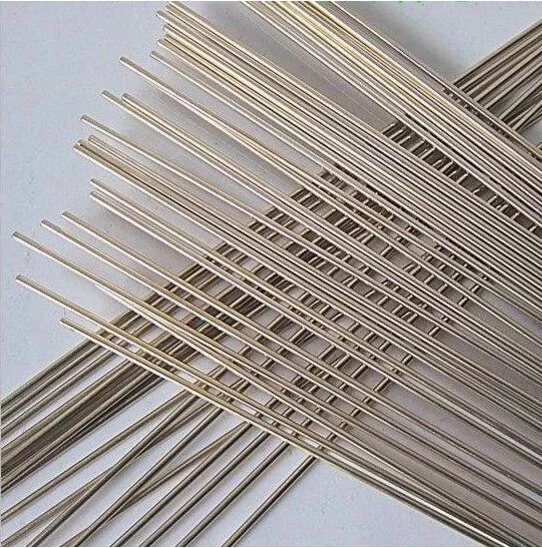
Heating Cast Iron
Braze welding has advantages over oxy welding as the consumable melts at a lower temperature than the cast iron. For example, silicon bronze (CuSi) has a melting point of 1800 °F (980 °C). That way, you need a significantly lower preheat temperature.
Local preheating should always be gradual. Indirect preheating involves preheating other critical parts of the job in addition to local preheating. You should preheat cast iron until it reaches dull red color.
A neutral or slightly oxidizing flame with a medium or heavy-duty welding nozzle is ideal for cast iron brazing. You should maintain the temperature throughout the welding. For big casting parts, use a furnace for uniform heating.
Keep in mind that a direct air draft on the brazing parts can result in fast cooling. Fast cooling can convert grey or malleable cast iron to white cast iron which is brittle and unweldable. This can result in a hairline crack in the base material, so try to ensure slow cooling.
Braze Welding Cast Iron
The braze welding of cast iron is a variant of the MIG/MAG welding process, where the majority of the process-essential variables are identical to conventional MIG/MAG. A continuously fed wire electrode is melted by an arc formed between the electrode and the workpiece, but no significant melting or fusion of the parent metal occurs because of the lower temperature.
Therefore, this method has no molten puddle and no fusion between the filler and the casting. The lower current and voltage also result in energy savings, which can be significant in a large manufacturing plant.
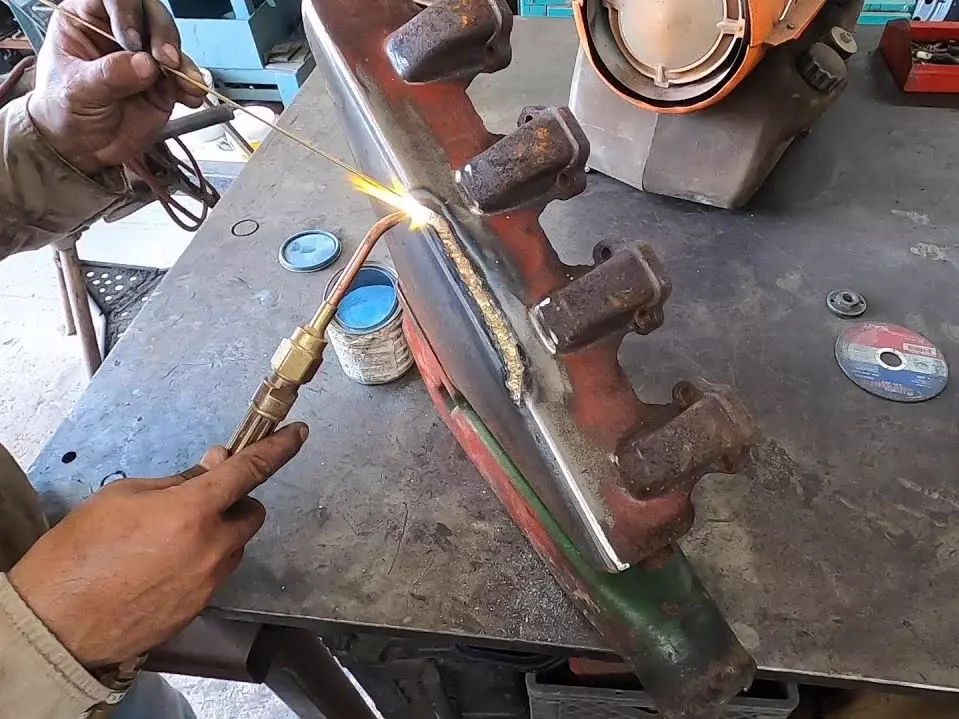
When you braze weld, you use a high traveling speed to heat the metal to a cherry red color. You don’t want to use higher heat, as a puddle will begin to form.
MIG braze welding wires don’t have a built-in flux, so they need 100% argon shielding gas. Furthermore, these wires need U-shaped rollers and a Teflon liner because they are soft.
TIG brazing is also possible, and you can use it utilizing lower amperage to heat the workpiece while avoiding melting the cast iron. The argon gas shields the brazing zone, meaning that there is no need to use flux as with oxy-fuel.
Should I Braze or Weld Cast Iron?
While both brazing and welding cast iron has their unique pros and cons, most applications include small cast iron repairs, and that’s where brazing thrives.
Compared to fusion welding, the most notable advantage is the reduced cracking risk and metallurgical changes in the HAZ. However, the main disadvantages of braze welding are the reduced strength and heat resistance of the brazed joint.
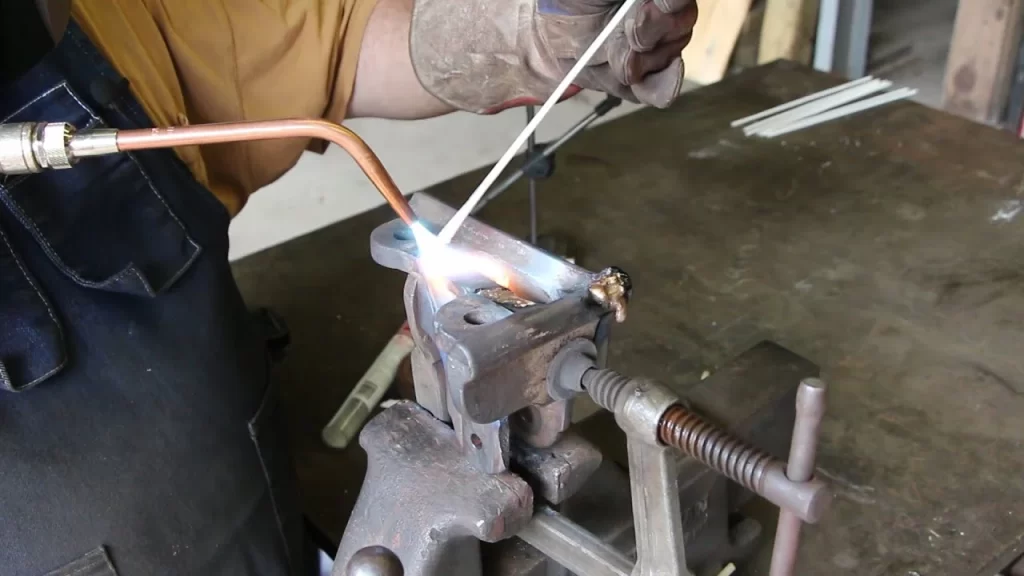
In addition, copper-based filler metals in brazing are more suitable to join dissimilar metals, for example, cast iron to steel. They are also the safest way to repair or join unknown castings.
Nonetheless, the most crucial advantage of welding is its superior strength. The filler metal and the parent metal both melt, mix and solidify. In addition, welding provides significant heat resistance to the weld area, making it suitable for high-temperature applications.





